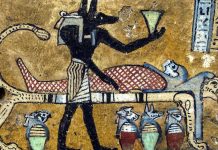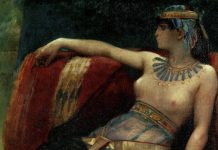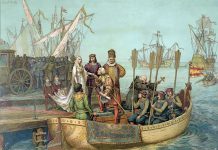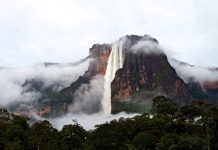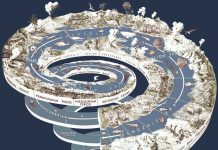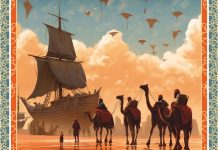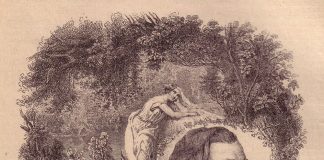After 5,000 years Australia’s Amazing Hieroglyphs still struggle for recognition ! Because this site is NON-ABORIGINAL – the Aussie Government still fails to protect it. Leading Australian researcher Paul White brings us this astounding story and translations of the Egyptian hieroglyphs found in New South Wales’ Hunter Valley. Denied by some ‘experts’ to be authentic – the time has come to delete Captain Cook as the discoverer of the Great South Land.
The hieroglyphs tell the tale of early Egyptian explorers, injured and stranded, in ancient Australia.
The discovery centres around a most unusual set of rock carvings found in the National Park forest of the Hunter Valley, 100 km north of Sydney. The enigmatic carvings have been part of the local folklore of the area for nearly a century with reports of people who sighted them as far back as the early 1900’s. The site was secretly visited by families "in the know" in the 1950’s and fell back into local mythology for a couple of decades until it was accidentally rediscovered by a man looking for his lost dog in the early 80’s. At that time it was reportably studied by a team, who packed up after six months convinced the site was an elaborate fraud…they destroyed their notes and still refuse any knowledge of it. Graham Walsh’s book
……The carvings are in a rock cleft, a large block of split sandstone on a cliff-face that has created a small chasm or "chamber" of two flat stone walls facing each other that widens out from two to four metres and is covered in by a huge flat rock as a "roof" at the narrow end….
The cleft is most cave-like and only accessible by a small rock chute from above or below, well disguised from the average bush-walker. When you first come up the rock chute and climb into the stone hallway you are immediately confronted by a number of worn carvings that are obviously ancient Egyptian symbols. These are certainly not your average Aboriginal animal carvings, but something clearly alien in the Australian bush setting. …. There are at least 250 hieroglyphs. At the end of the chamber, protected by the remaining section of stone roof, is a remarkable third-life sized carving of the ancient Egyptian god "Anubis", the Judge of the Dead ! The hieroglyphs were extremely ancient, in the archaic style of the early dynasties. This archaic style is very little known and untranslatable by most Egyptologists who are all trained to read Middle Egyptian upward. The classic Egyptian dictionaries only handle Middle Egyptian, and there are few people in the world who can read and translate the early formative style. Because the old style contains early forms of glyphs that correlate with archaic Phoenician and Sumerian sources one can see how the university researchers who saw them could so easily have thought them to be bizarre and ill-conceived forgeries.The aging Egyptologist Ray Johnson, who had translated extremely ancient texts for the Museum of Antiquities in Cairo eventually was successful in documenting and translating the two facing walls of Egyptian characters. … which stemmed from the Third Dynasty.
Tragic Saga
The rock walls chronicle a tragic saga of ancient explorers shipwrecked in a strange and hostile land, and the untimely death of their royal leader, "Lord Djes-eb". A group of three cartouches (framed clusters of glyphs) record the name of "RA-JEDEF" as reigning King of the Upper and Lower Nile, and son of "KHUFU" who, in turn, is son of the King "SNEFERU". This dates the expedition just after the reign of King Khufu (known in the Greek as "Cheops" reputed builder of the Great Pyramid) somewhere between 1779 and 2748 BC. Lord Djes-eb may have actually been one of the sons of the Pharaoh Ra Djedef, who reigned after Khufu.The hieroglyphic text was apparently written under the instruction of a ship’s captain or similar, with the corner glyph on the wall displaying the title of a high official or chief priest. The scribe is "speaking for his Highness, the Prince, from this wretched place where we were carried by ship." The expedition’s leader, as mentioned before is described in the inscriptions as the King’s son, "Lord Djes-eb", who came to grief a long way from home. The hieroglyphics sketch his journey and his tragic demise:"For two seasons he made his way westward, weary, but strong to the end. Always praying, joyful, and smiting insects. He, the servant of God, said God brought the insects…Have gone around hills and deserts, in wind and rain, with no lakes at hand… He was killed while carrying the Golden Falcon Standard up front in a foreign land, crossing mountains, desert and water along the way. "……."He, who died before, is here laid to rest. May he have life everlasting. He is never again to stand beside the waters of the Sacred Mer."…MER meaning "love". There was a moat around the pyramid called the "waters of Mer" .The second facing wall, which was much more seriously eroded, details the tragedy further. This wall begins with the badly eroded glyph of a snake (Heft), with a glyph of jaws (to bite) and the symbol for "twice"……"The snake bit twice. Those followers of the diving Lord "KHUFU", mighty one of Lower Egypt, Lord of the Two Adzes, not all shall return. We must go forward and not look back. All the creek and river beds are dry. Our boat is damaged and tied up with rope. Death was caused by snake. We gave egg-yolk from the medicine-chest and prayed to AMEN, the Hidden One, for he was struck twice." Burial rituals, prayers and preparations are described… "We walled in the side entrance to the chamber with stones from all around. We aligned the chamber with the Western Heavens." ….The three doors of eternity were connected to the rear end of the royal tomb and sealed in. We placed beside it a vessel, the holy offering, should he awaken from the tomb.
Separated from home is the Royal body and all others. "…. The extraordinary 5,000 year-old story of the death and burial of "Lord Djes-eb" one of the sons of the Pharaoh Ra Djedef.
… Visual observation of the site makes it obvious that the very worn carvings exposed to the coastal weather would have to be several centuries to a thousand years old at least…. When first found the site was completely overgrown with thick vegetation and filled in with smashed rock and a much higher soil line. A number of excavation attempts by interested parties have not turned up any artifacts or bodies but sophisticated and expensive laser scanning techniques have not been applied… There is significant evidence that the ancients were well aware of the Great South land. There were both Sumerian and Mayan traditions of a "lost motherland" in the Pacific. Australia appears under the name of "Antoecie" on the famous spherical world map of Crates of Mallos, even appearing on the Greek map of Eratosthenese in 239 BC… It seems fairly certain that the maritime civilisations of antiquity were quite capable of extensive ocean voyages. Particularly the early Egyptians, as evidenced by Giza’s remarkable "Tomb of the Boat". In the 1950’s, a streamlined 4,500 year old hundred foot, ocean going vessel was excavated from right next to the Great Pyramid. In 1991 an entire fleet of even older boats was found buried in the desert at Abydos in Upper Egypt. According to Cairo Times, in 1982, archaeologists working at Fayum, near the Siwa Oasis uncovered fossils of kangaroos and other Australian marsupials. And there’s also the strange set of golden boomerangs discovered by Prof. Carter in the tomb of Tutankhamen in 1922.





